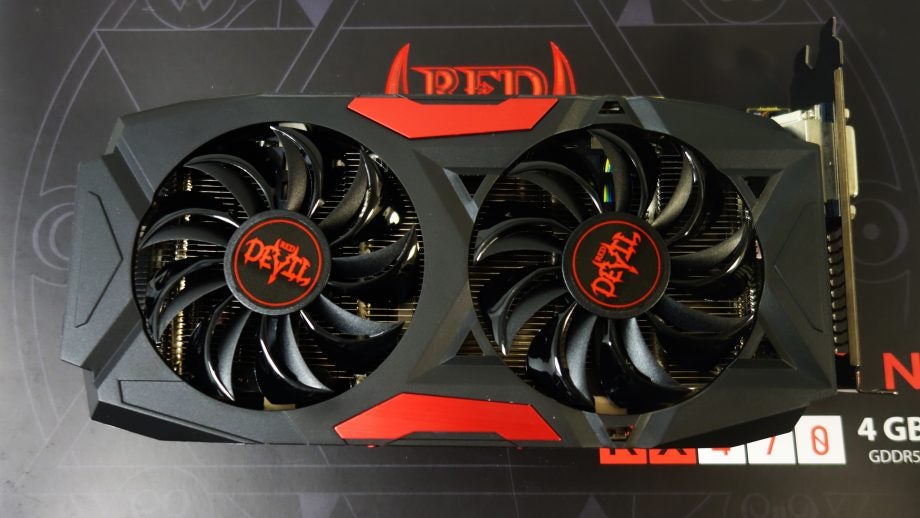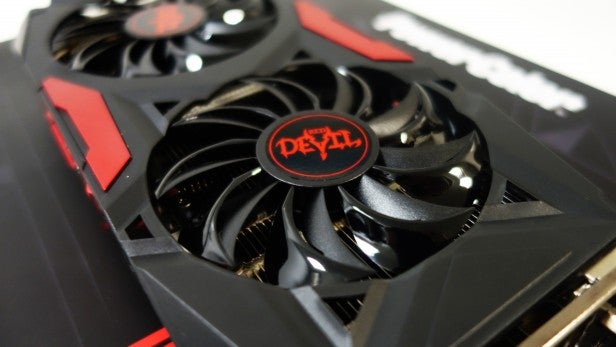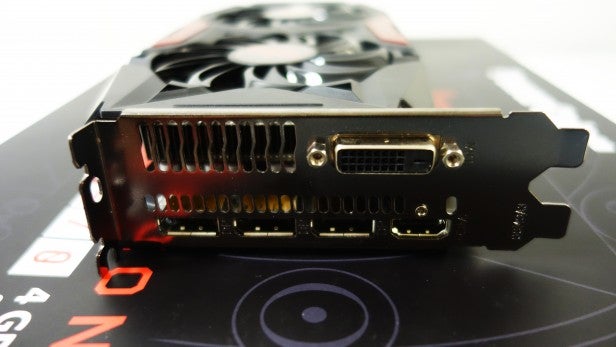AMD Radeon RX 470 Review
AMD Radeon RX 470
A Full HD wizard that sips electricity

Sections
- Page 1 AMD Radeon RX 470 Review
- Page 2 Performance, Benchmarks and Verdict Review
Verdict
Pros
- Great Full HD performance
- Low power consumption
- Plenty of memory for a sub-£200 card
Cons
- Priced too near the 4GB RX 480
Key Specifications
- Review Price: £200.00
- 2,048 stream processors
- 32 compute units
- Maximum boost clock: 1,270MHz
- 4GB GDDR5 memory
- DVI, HDMI, 3x DisplayPort
- TDP: 120W
What is the AMD Radeon RX 470?
The AMD Radeon RX 470 sits slightly awkwardly in AMD’s range. As you’ll see from our benchmarks, it’s a great Full HD GPU, but pricing oddities mean it sits in a price bracket that’s just 5% lower than the more powerful 4GB RX 480.
Aside from the economics – these might change in the coming months – AMD has produced a very competent card for Full HD gaming with the latest AAA titles with a very low power draw of just 120W. Compact versions of this card will be great for microATX and mini-ITX PC builds, producing very little heat and noise and playing nicely with tight power budgets.
AMD isn’t producing its own version of the RX 470, so reviewers have been sent a variety of third-party cards from AMD’s partners. Ours is a PowerColor Red Devil model that’s currently priced at £200.
Related: Best graphics cards
AMD Radeon RX 470 – Specs and Technology
The Radeon RX 470 uses the exact same chip as the RX 480, called Polaris 10. The RX 470 uses ‘binned’ Polaris 10 chips – a common practice in the world of microelectronics. These binned chips didn’t make the grade as RX 480 units, but they’re still good enough to match the specification of the less powerful RX 470. It’s sensible business logic: you get a much higher yield of usable Polaris 10 chips and get to sell them in two different products.
The difference between the two isn’t huge. The RX 480 has 36 compute units, while the 470 gets 32. Clock speeds have been reduced slightly, too, with the base clock speed sitting at 926MHz, lower than the RX 480’s 1,120MHz. Our PowerColor model comes pre-overclocked with a boost clock speed of 1270MHz.
The RX 470 gets the same memory as the 4GB RX 480, shipping with GDDR5 with a 256-bit bus and a memory bandwidth of 211GB/s, which is slightly less than the 224GB/s on the RX 480.
Polaris itself is full of little technical treats, with perhaps the most important coming in the form of massively improved power efficiency. There are also hardware-level improvements to colour compression for more efficient rendering, and granular overclocking control with AMD’s WattMan software.
Related: Our ultimate PC building guide
Our PowerColor model came pre-overclocked to 1,270MHz with 1,750MHz memory. It’s a double-height card, as is typical with all RX 470s. It has a dual-fan design with nine blades on each. The shroud is made of black plastic, and the backplate is a simple matte-black affair with a hexagram affirming the satanic themes of PowerColor’s Red Devil.
The PowerColour RX 470 comes with a small switch on its near side that toggles between the overclocked mode and a quieter, more power-efficient mode. All of our testing was conducted in the OC mode, which is the default setting. Turn to page two to see how it performed.
The number of video outputs on the RX 470 varies across the different third-party manufacturers. Our model included three DisplayPort 1.2 sockets, an HDMI 2.0 connector and a DVI connector, but some are available with a second HDMI port in place of one of the DisplayPorts.


